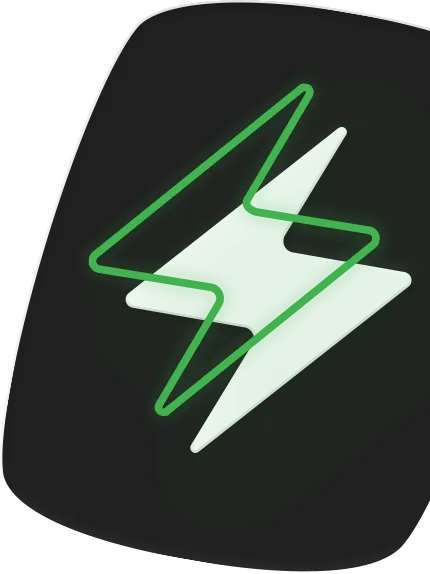Digital Marketing is a very broad field and it is populated with a large selection of terms, acronyms, and abbreviations. Imagine hearing something like: “can you send me in-house CPA offers for the following GEOs in HTML please?” or “are you working with CPI or CPC and which verticals do you prefer?”. I bet it doesn’t sound that obvious for newbies in this industry. When it comes to Performance Marketing, some of those known words get a narrower meaning. Moreover, there are some very specific terms used on a daily basis and if you don’t want to deal with constant confusion, this article is for you.

Whether you are new to this market or very experienced, those are terms you must know when working in Performance Marketing. Without further ado, let’s get started!
1. Advertiser: is the company that controls or owns the product that is being advertised.
2. Affiliate Network: an agency that takes offers from advertisers or product owners and promotes them among its sources of publishers.
3. Cap (or capping): is a numerical limit for the offer. The cap can be related to the maximum amount of sales, leads, impressions. It can be applied on a daily basis or during the whole period of promotion, depending on the advertiser’s needs.
4. Conversion: is the successful action you want the user to go through with. Usually the conversion is a sale, but it can also be a subscription, a download, a form submission, an app installation etc.
5. CPA: cost per action or acquisition. Payment model by which affiliates/publishers get paid for each valid action generated by their traffic, like a product acquisition or subscription.
6. CPC: cost per click. Payment model by which the advertiser pays for user clicks on the ad or given link.
7. CPE: cost per engagement or event. Payment model by which a commission is paid for the user’s engagement with the content, product or app. For instance, when a user downloads a mobile app and has to use a specific feature for the first time.
8. CPI: cost per install. Payment model by which the commission/payout is paid upon a software or app being installed by a user.
9. CPL: cost per lead. Payment model by which the advertiser pays a commission for each valid lead generated.
10. CPM: cost per mille/thousand. Payment model by which the advertiser pays for each 1.000 impressions of an ad.
11. CPO: cost per order. Payment model by which the advertiser pays for a completed order/purchase of a given product by the user.
12. CR: Conversion Rate is the percentage of users that visited a website and performed a conversion. If 2.000 users got into a Landing Page and 53 of them filled out a form, the CR would be 53/2000 x 100 % = 2,65%.
13. CTR: click-through rate is the percentage of users that saw and clicked in an ad or a button. If 75.000 users viewed the banner and 7.500 clicked on it, the CTR would be 7.500/75.000 x 100 % = 10%.
14. Direct offer: offer taken directly from the advertiser or product owner.
15. DOI (Double Opt-in): type of conversion which requires two steps before considering the user a lead. Usually the first step is filling out a form and the second one is confirming a link received by email.
16. Exclusive offer: if an agency says they have an exclusive offer, it means they are the only ones getting it directly from the product owner to be promoted.
17. Flow: is the path the user needs to follow in order to materialise the conversion. One flow example is: the user fills out a form with their personal information, clicks on “next”, submits their credit card details and concludes the subscription.
18. Geo: is the same as country, geographic region. Typically geos are being referred to using two letters as a county code (the so-called alpha-2 codes). For example: PL is Poland, US is United States, BR is Brazil, CL is Chile and so on.
19. HTML: HyperText Markup Language is a computer language. In Performance Marketing, normally “HTML” is used as a synonym for email templates.
20. In-house: if an agency says they have In-house products, it means they own the product. Consequently, the payout will be the best available in the market for those offers.
21. Incent traffic: is a type of traffic where users are offered money, prizes or virtual rewards in order to perform an action like: installing an app, watching a video ad, playing a game, filling out a form etc.
22. IO: Insertion Order is a simple contract that needs to be signed in order to start cooperation between advertisers, agencies and publishers.
23. Landing Page: it is a page where the user “lands” after clicking on an ad. The main goal of a landing page is to lead the user to perform a conversion.
24. Non-incent traffic: is a traffic generated for that specific offer. The user only interacts if they have interest in it. No rewards are given to the user in exchange for their action.
25. Payment models: are the different kinds of payments being issued between advertisers, agencies and publishers. Some examples of models are CPA, CPI, CPL and CPC.
26. Payout: is the commission or fee that will be paid for each valid conversion.
27. Postback: is a tracking method to record and pass the conversion details from one server to another. It allows both sides (advertiser and agency, or agency and affiliate) to see the conversions.
28. SOI (Single Opt-in): type of conversion which requires just one step in order to consider the user a lead. Usually this step is filling out a form.
29. Tracking pixel (or pixel): is a tracking method by which a code or a script is placed on a website to track conversions.
30. Tracking URL (or tracking link): is a unique URL used to track the sources responsible for clicks and conversions in a given offer.
31. Test URL (or test link): is a link used to perform a test conversion and check if both sides (advertisers and agencies or agencies and affiliates) are receiving it, assuring the connection between platforms is working well.
32. Vertical: the same as offer categories. Some examples of verticals are: streaming, fitness, gambling, games, downloads, education, utilities.
33. Worldwide (WW): when an offer is worldwide it means it is available and can be run in all countries.
Here you go! Those are some of the main terms used everyday in this marketing field. Yes, that’s right, this is not a complete list but only few of them, but those you need the most, for sure! Write them down on your phone, a piece of paper or print this article and put it on your fridge!
Have you come across other must-know Performance Marketing terms you would definitely put on this list? Leave your comment here!




